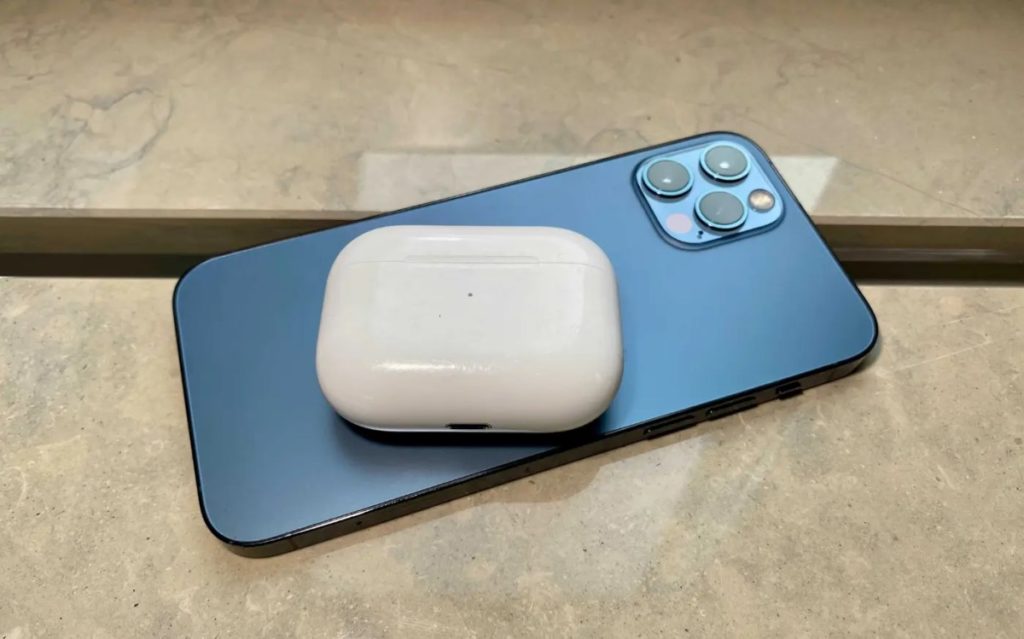Apple has filed for a patent (number US 20230361632 A1) for “Magnetic Alignment Structures With Variable Field Strength.” It hints at future Apple devices with reverse wireless charging.
Reverse wireless charging, also referred to as bilateral wireless charging would allow users to not only recharge a phone with a wireless charger but also use the device to recharge an accessory. Apple has filed for various patents for such technology.
About the patent filing
The patent filing relates generally to consumer electronic devices and more particularly to magnetic alignment components and systems that facilitate establishing and maintaining a desired alignment between two (or more) devices, e.g., for purposes of enabling efficient wireless power transfer between the devices.
In the patent filing, Apple notes that some portable electronic devices (such as iPhones and Apple Watches) include a rechargeable battery that can be recharged by coupling the portable electronic device to a power source through a physical connection, such as through a charging cord. Using a charging cord to charge a battery in a portable electronic device, however, requires the portable electronic device to be physically tethered to a power outlet.
Additionally, using a charging cord requires the mobile device to have a connector, typically a receptacle connector, configured to mate with a connector, typically a plug connector, of the charging cord. The receptacle connector includes a cavity in the portable electronic device that provides an avenue via which dust and moisture can intrude and damage the device. Further, a user of the portable electronic device has to physically connect the charging cable to the receptacle connector in order to charge the battery.
Apple says that to avoid such shortcomings, wireless charging technologies have been developed that exploit electromagnetic induction to charge portable electronic devices without the need for a charging cord. For example, some portable electronic devices can be recharged by merely resting the device on a charging surface of a wireless charger device.
A transmitter coil disposed below the charging surface is driven with an alternating current that produces a time-varying magnetic flux that induces a current in a corresponding receiver coil in the portable electronic device. The induced current can be used by the portable electronic device to charge its internal battery. Some portable electronic devices have been designed to not only receive power wirelessly but also to transmit power wirelessly to other portable electronic devices, such as accessory devices.
Apple’s patent filing hints at the ability of future Mac laptops to, for instance, charge an iPhone by placing it on the trackpad. Or an iPhone could have the ability to charge an AirPod placed on it.
Summary of the patent filing
Here’s Apple’s (very technical) abstract of the patent: “A magnetic alignment system can include a primary annular magnetic alignment component and a secondary annular magnetic alignment component. The primary alignment component can include an inner annular region having a first magnetic orientation, an outer annular region having a second magnetic orientation opposite to the first magnetic orientation, and a non-magnetized central annular region disposed between the primary inner annular region and the primary outer annular region. The secondary alignment component can have a magnetic orientation with a radial component. Additional features, such as a rotational magnetic alignment component and/or an NFC coil and circuitry can be included.”
Article provided with permission from AppleWorld.Today

